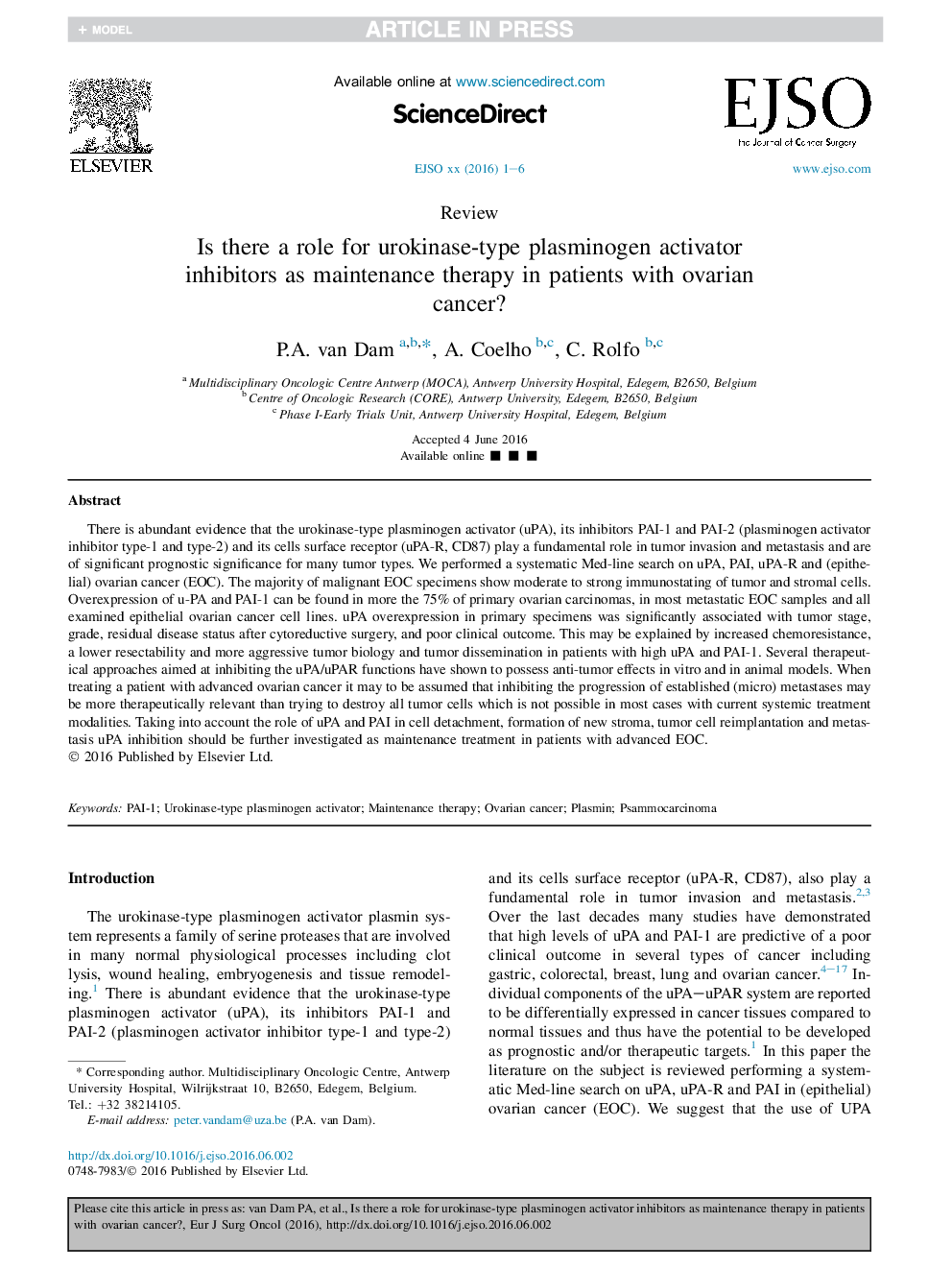| Article ID | Journal | Published Year | Pages | File Type |
|---|---|---|---|---|
| 5700871 | European Journal of Surgical Oncology (EJSO) | 2017 | 6 Pages |
Abstract
There is abundant evidence that the urokinase-type plasminogen activator (uPA), its inhibitors PAI-1 and PAI-2 (plasminogen activator inhibitor type-1 and type-2) and its cells surface receptor (uPA-R, CD87) play a fundamental role in tumor invasion and metastasis and are of significant prognostic significance for many tumor types. We performed a systematic Med-line search on uPA, PAI, uPA-R and (epithelial) ovarian cancer (EOC). The majority of malignant EOC specimens show moderate to strong immunostating of tumor and stromal cells. Overexpression of u-PA and PAI-1 can be found in more the 75% of primary ovarian carcinomas, in most metastatic EOC samples and all examined epithelial ovarian cancer cell lines. uPA overexpression in primary specimens was significantly associated with tumor stage, grade, residual disease status after cytoreductive surgery, and poor clinical outcome. This may be explained by increased chemoresistance, a lower resectability and more aggressive tumor biology and tumor dissemination in patients with high uPA and PAI-1. Several therapeutical approaches aimed at inhibiting the uPA/uPAR functions have shown to possess anti-tumor effects in vitro and in animal models. When treating a patient with advanced ovarian cancer it may to be assumed that inhibiting the progression of established (micro) metastases may be more therapeutically relevant than trying to destroy all tumor cells which is not possible in most cases with current systemic treatment modalities. Taking into account the role of uPA and PAI in cell detachment, formation of new stroma, tumor cell reimplantation and metastasis uPA inhibition should be further investigated as maintenance treatment in patients with advanced EOC.
Keywords
Related Topics
Health Sciences
Medicine and Dentistry
Oncology
Authors
P.A. van Dam, A. Coelho, C. Rolfo,
